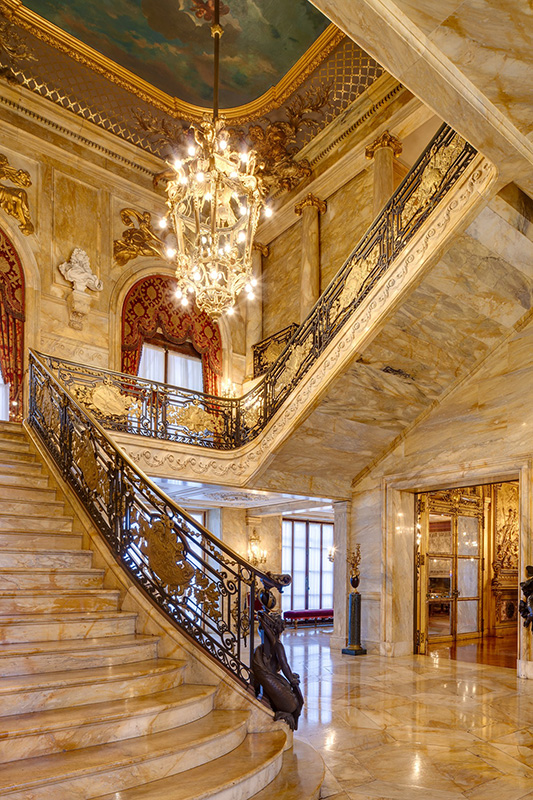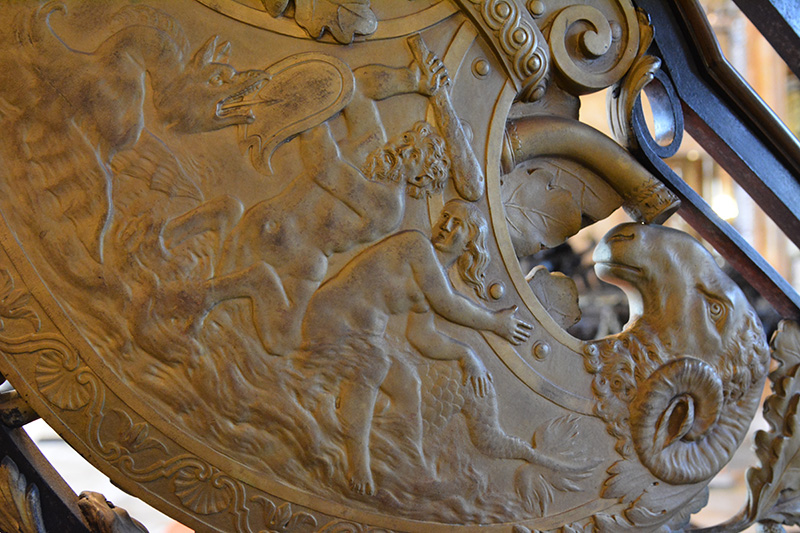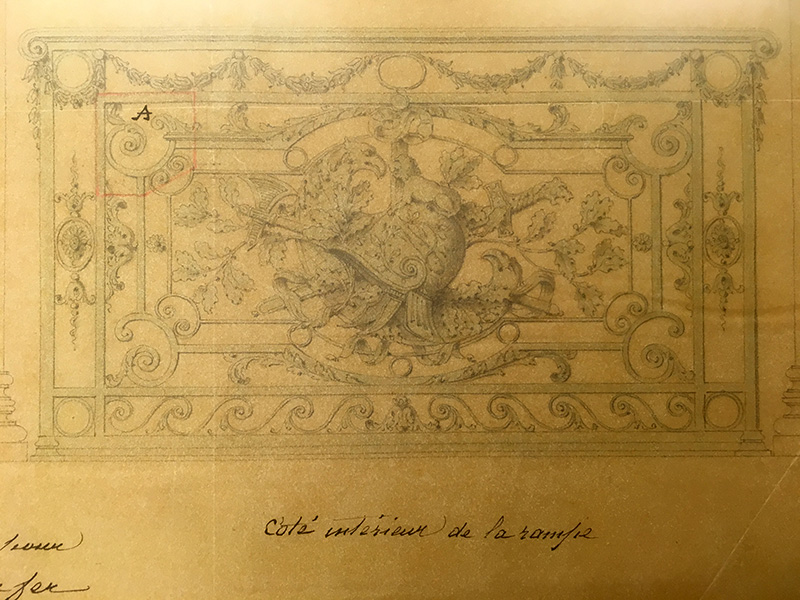Versailles in Newport: Jules Allard’s Staircase Railing at Marble House
by Mathilde Tollet
My research fellowship at The Preservation Society of Newport County focuses on the artistic wrought iron in the Newport, RI, mansions built by Richard Morris Hunt (1827–1895) at the end of the 19th century. I am particularly interested in the cultural exchanges between France and the United States and have confirmed close connections between Hunt and French sources at Versailles.
Through preparatory drawings, plans, and scrapbooks from Hunt’s workshop housed at the Library of Congress, I have identified clear comparisons between the French “serrurerie” and the works visitors admire in Newport mansions, including decorative grilles, railings, and doors. Although domestic wrought iron of this era is largely understudied, the topic is rife for research, incorporating allied fields of architecture, sculpture, and engraving.
I have demonstrated the direct connection between the bronze trophies in the staircase at Marble House (figures 1 and 2) built for Mr. and Mrs. William K. Vanderbilt and sculpture in the Bosquet des Dômes at Versailles. The latter were made in 1676 by the sculptor François Girardon (1628–1715), one of the most talented artists working during Louis XIV’s reign.
Jules Allard, a French designer assisting Richard Morris Hunt, had access to molds taken from those elements. A drawing at the Library of Congress documents that the entire railing at Marble House was designed and manufactured in a French workshop and then shipped to Newport (figure 3). Allard was well known for his participation in world fairs, winning medals in 1867 and 1878 for beautiful furniture created in his 300-artisan workshop in the Faubourg du Temple in Paris. He probably met with Richard Morris Hunt in Paris before opening a branch of his business in New York in 1885. He received multiple commissions mainly from wealthiest families on the East Coast. In Newport, he worked with Hunt for Marble House, Ochre Court, and The Breakers and then with Horace Trumbauer at the Elms.
The splendid railing is signed by Allard at the foot of the little cherub at the bottom of the stairs. Railings are rarely signed, as wrought iron was typically sometimes considered a craft rather than a work of art. The presence of Allard’s name demonstrates the exceptional character of this railing and his significance to Hunt’s overall design at Marble House.
I am grateful for the opportunity to draw attention to the important iron work in Newport’s Gilded Age mansions, exploring underrepresented dimensions of art history.
Mathilde Tollet is a Research Fellow at The Preservation Society of Newport County who spoke at their Emerging Scholars Colloquium in collaboration with the Decorative Arts Trust in February 2020. She is a graduate of the Ecole du Louvre in Paris with a master’s degree in Museology and Conservation with a specialization in decorative arts.
A print version of this article was published in The Magazine of the Decorative Arts Trust, one of our most popular member benefits. Join today!



